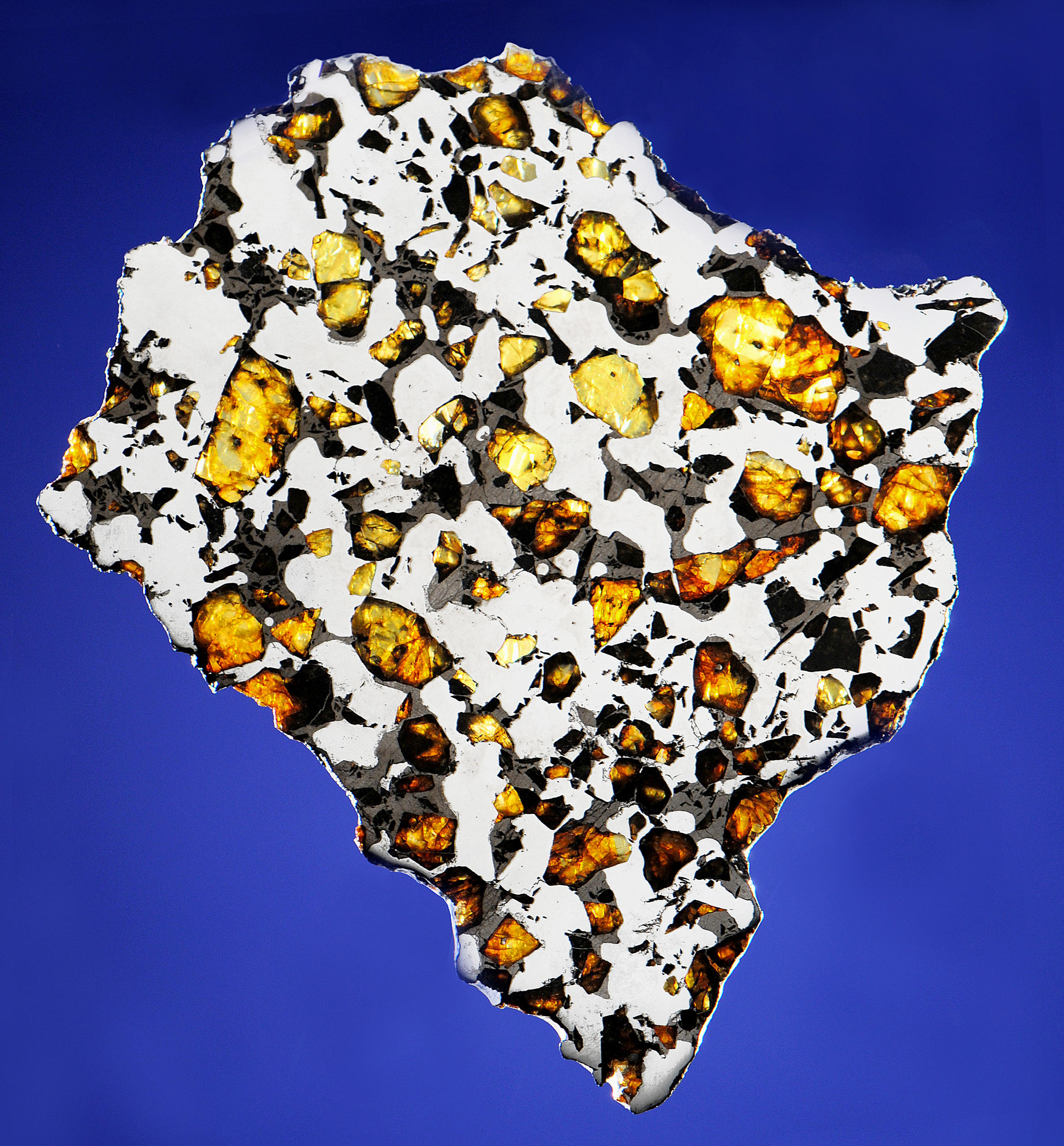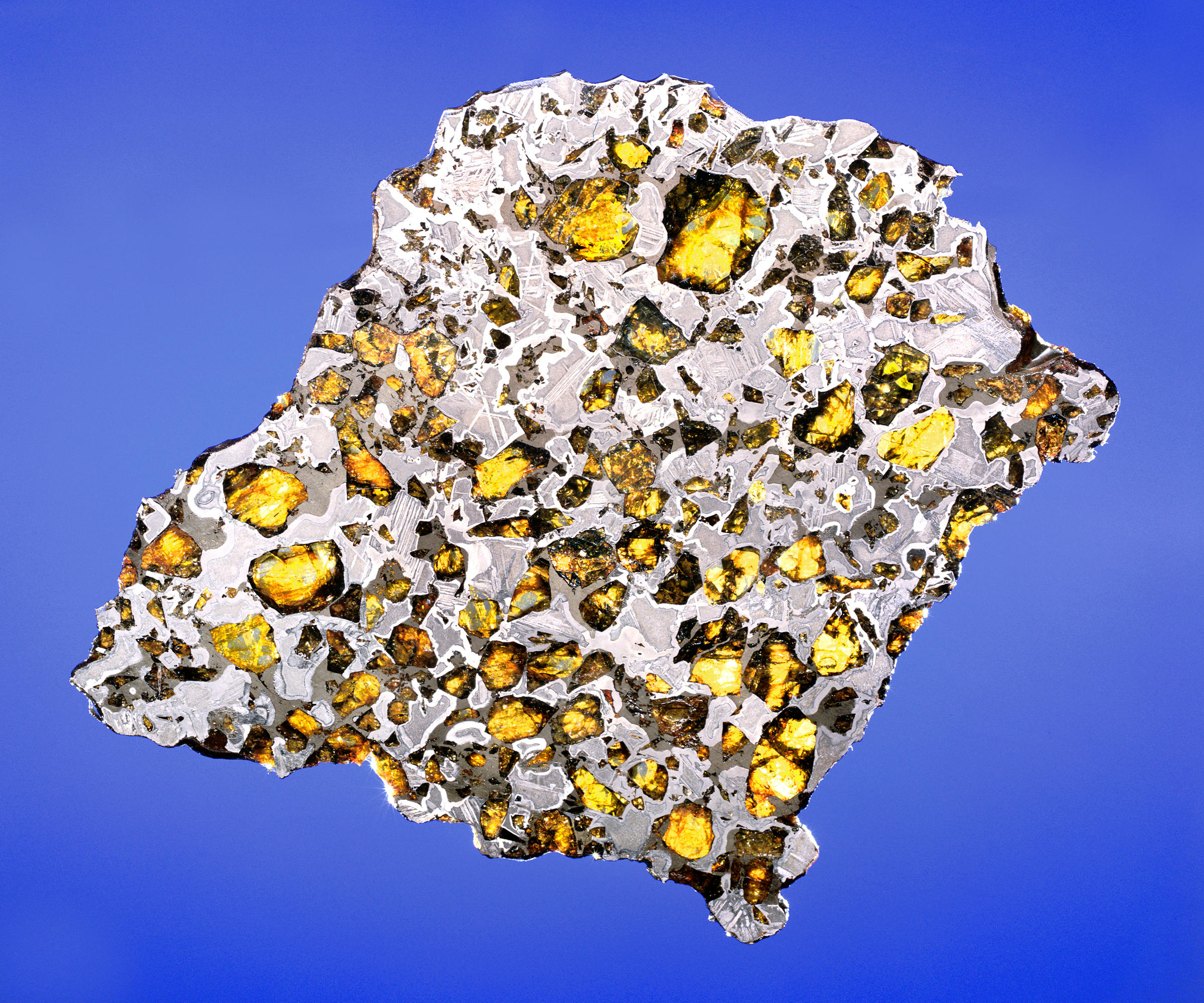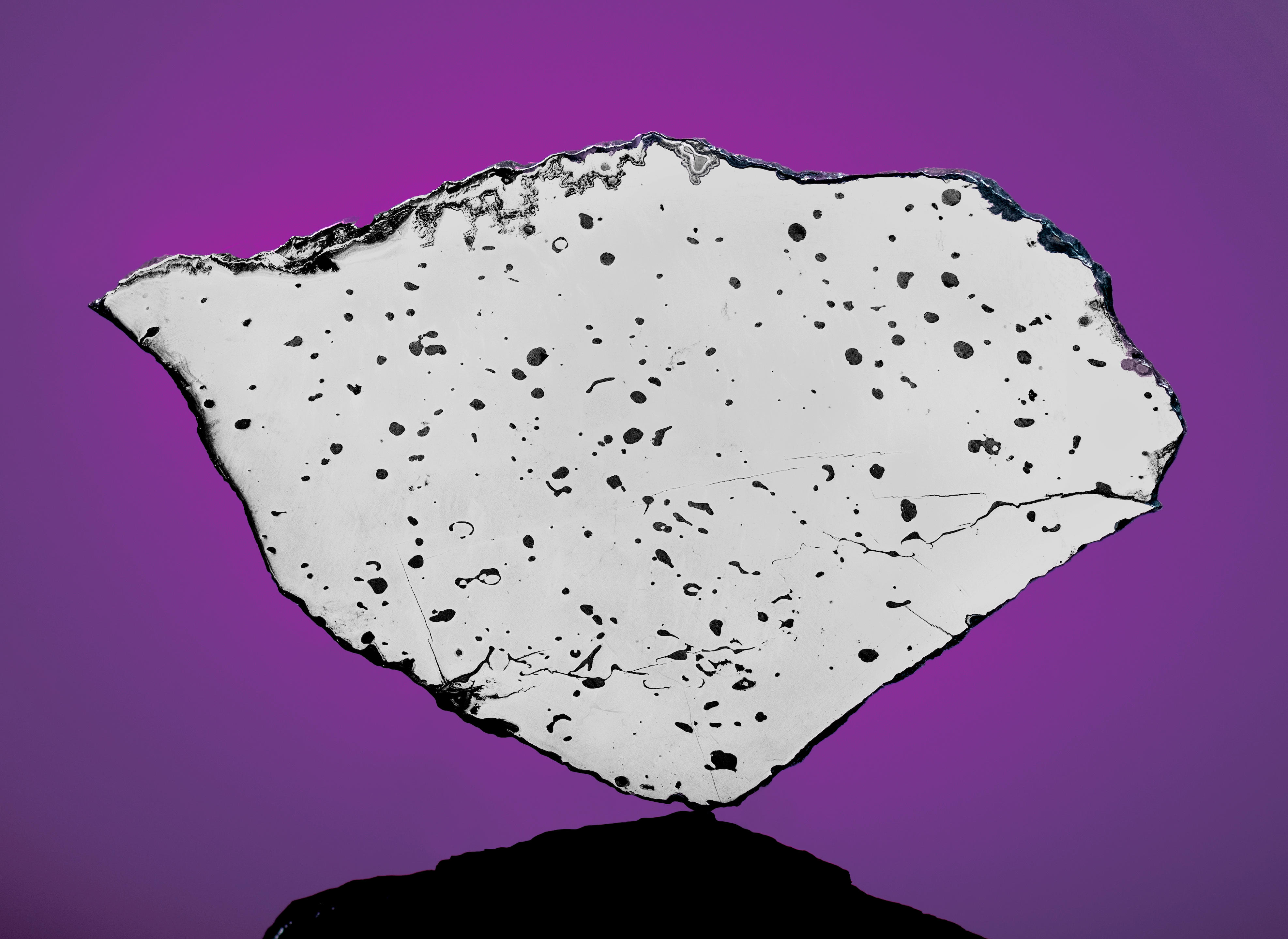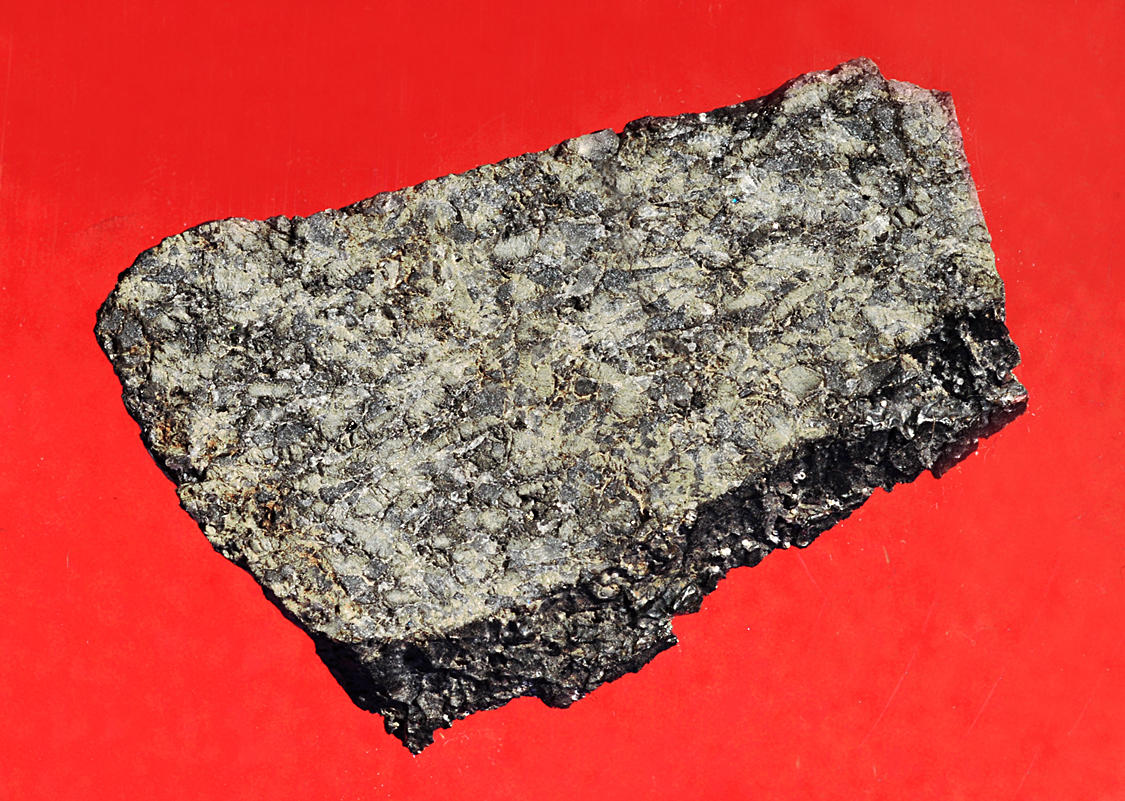Mingled Lunar Breccia Dhofar, Oman This is an important complete slice of a lunar meteorite—that is to say, a piece of the Moon ejected from the lunar surface following an asteroid impact. As of March 1st of this year there were, as announced in the scientifically accredited journal of record, the Meteoritical Bulletin, 56 distinct lunar meteorites known to exist. The total weight of these specimens is less than 100 pounds—a large portion of which is not available to the public. At 10:30 in the morning on January 4, 2008 in the Dhofar Desert region of Oman, meteorite hunter Michael Farmer found what is now acknowledged by scientists to be the 57th distinct meteorite known to exist. The news of this discovery is to be imminently announced by the Meteoritical Bulletin—a discovery which Mr. Farmer was fortunate to have made: it was after having decided with co-hunter Robert Ward to get out of the desert and return to civilization to get gas that he spotted the dark rock atop the desert pavement. Upon noticing the conspicuously white anorthositic clasts—he knew he found a Moon rock. Using a satellite phone, Mr. Farmer immediately called acclaimed NASA scientist Dr. Ted Bunch who—who along with Dr. Dolores Hill of the Lunar and Planetary Laboratory—has done the preliminary work on what is the newest of meteorites from the Moon. Lunar specimens are identified by specific geological, mineralogical, chemical and radiation signatures. The most common minerals found on Earth’s surface are not found on the Moon; the minerals comprising the Moon’s crust are limited and readily identifiable. In addition, lunar rocks contain gases originating from the solar wind with isotope ratios that are very different than the same gases found on Earth. Moreover, lunar samples brought to Earth by the Apollo missions can be matched with suspected lunar meteorites. The entire 100.8 gram mass was purchased by the Macovich Collection; a 22 gram type specimen was removed and will remain in the vaults of research institutions. The complete slice offered here will forever be one of the two largest slices ever available of this important meteorite. Encircled by a rim of fusion crust, this complete slice is packed with the white anorthositic clasts noticed by Mr. Farmer—a feature that is diagnostic in the identification of lunar specimens. In an appropriate presentation, this slice is held aloft in a custom armature covered by a Lucite dome secured to its pedestal’s base. This lot is also accompanied by a copy of the forthcoming Meteoritical Bulletin which will be heralding this historic discovery. Samples of the Moon are among the rarest objects on Earth. From the Macovich Collection, this is a superb and important lunar specimen. 86 x 45 x 2mm (3.25 x 1.75 x 0.1 inches) and 8.939 grams
Mingled Lunar Breccia Dhofar, Oman This is an important complete slice of a lunar meteorite—that is to say, a piece of the Moon ejected from the lunar surface following an asteroid impact. As of March 1st of this year there were, as announced in the scientifically accredited journal of record, the Meteoritical Bulletin, 56 distinct lunar meteorites known to exist. The total weight of these specimens is less than 100 pounds—a large portion of which is not available to the public. At 10:30 in the morning on January 4, 2008 in the Dhofar Desert region of Oman, meteorite hunter Michael Farmer found what is now acknowledged by scientists to be the 57th distinct meteorite known to exist. The news of this discovery is to be imminently announced by the Meteoritical Bulletin—a discovery which Mr. Farmer was fortunate to have made: it was after having decided with co-hunter Robert Ward to get out of the desert and return to civilization to get gas that he spotted the dark rock atop the desert pavement. Upon noticing the conspicuously white anorthositic clasts—he knew he found a Moon rock. Using a satellite phone, Mr. Farmer immediately called acclaimed NASA scientist Dr. Ted Bunch who—who along with Dr. Dolores Hill of the Lunar and Planetary Laboratory—has done the preliminary work on what is the newest of meteorites from the Moon. Lunar specimens are identified by specific geological, mineralogical, chemical and radiation signatures. The most common minerals found on Earth’s surface are not found on the Moon; the minerals comprising the Moon’s crust are limited and readily identifiable. In addition, lunar rocks contain gases originating from the solar wind with isotope ratios that are very different than the same gases found on Earth. Moreover, lunar samples brought to Earth by the Apollo missions can be matched with suspected lunar meteorites. The entire 100.8 gram mass was purchased by the Macovich Collection; a 22 gram type specimen was removed and will remain in the vaults of research institutions. The complete slice offered here will forever be one of the two largest slices ever available of this important meteorite. Encircled by a rim of fusion crust, this complete slice is packed with the white anorthositic clasts noticed by Mr. Farmer—a feature that is diagnostic in the identification of lunar specimens. In an appropriate presentation, this slice is held aloft in a custom armature covered by a Lucite dome secured to its pedestal’s base. This lot is also accompanied by a copy of the forthcoming Meteoritical Bulletin which will be heralding this historic discovery. Samples of the Moon are among the rarest objects on Earth. From the Macovich Collection, this is a superb and important lunar specimen. 86 x 45 x 2mm (3.25 x 1.75 x 0.1 inches) and 8.939 grams

.jpg)

.jpg)

.jpg)

.jpg)
.jpg)

.jpg)
.jpg)
.jpg)
.jpg)

Testen Sie LotSearch und seine Premium-Features 7 Tage - ohne Kosten!
Lassen Sie sich automatisch über neue Objekte in kommenden Auktionen benachrichtigen.
Suchauftrag anlegen